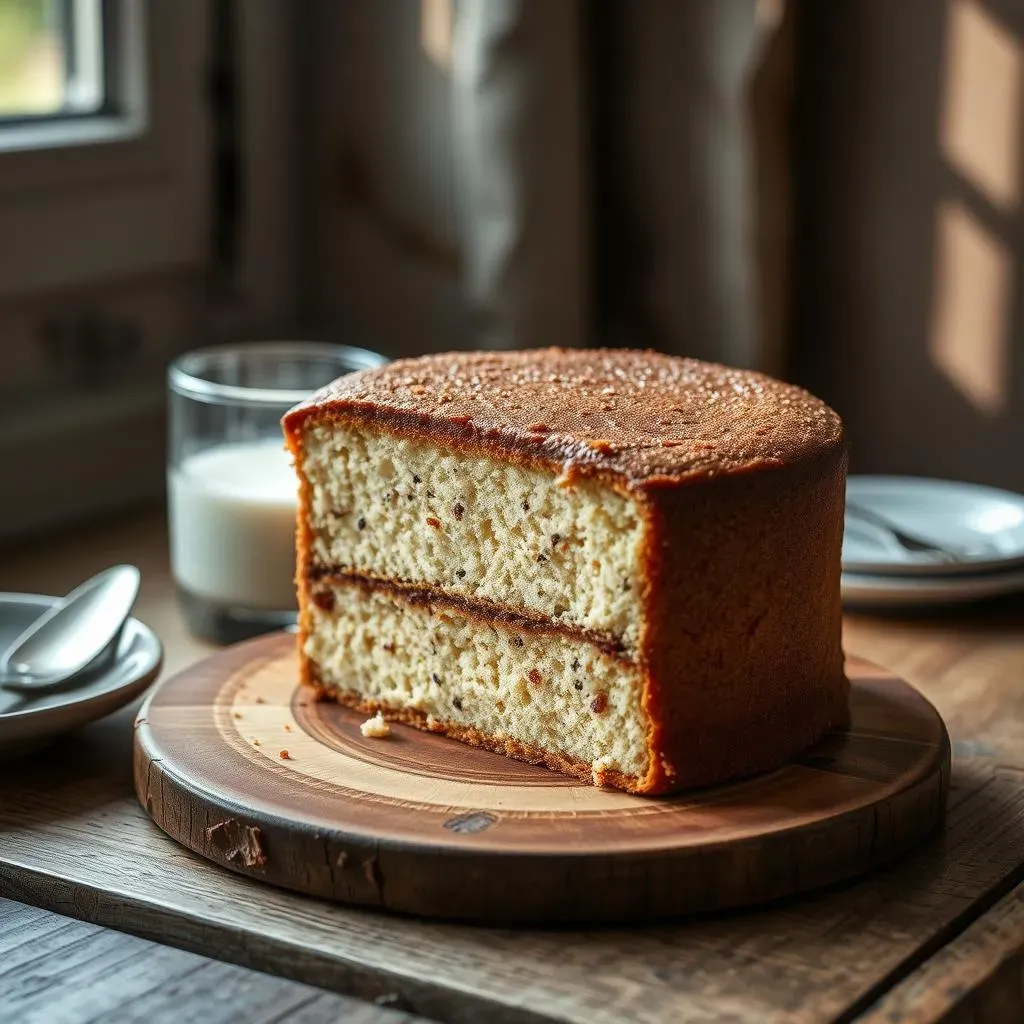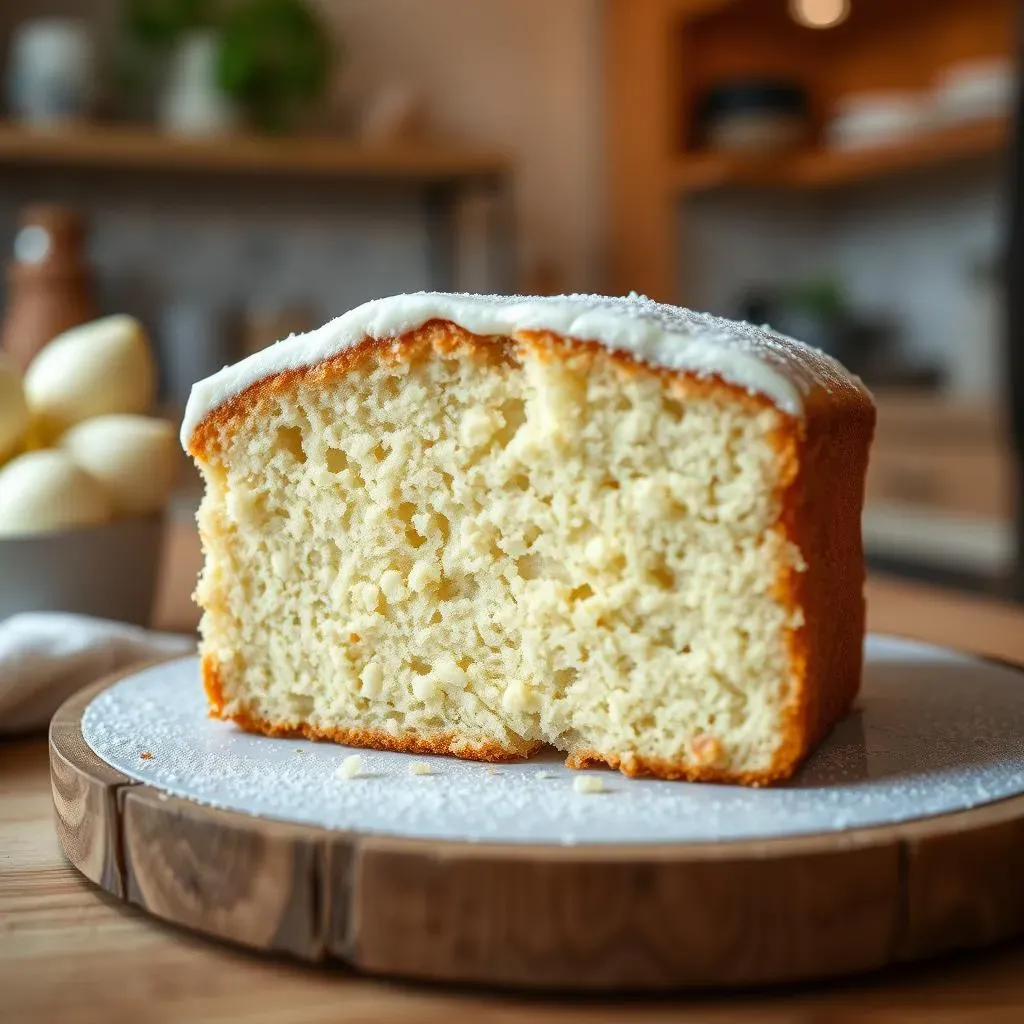Table of Contents
Ever find yourself mid-recipe, craving that tangy richness of sour cream, only to discover your fridge is bare? Don't panic! Greek yogurt is here to save your baking day. This article is your guide to mastering the art of using Greek yogurt as a substitute for sour cream in baking. We'll explore why this swap works so well, diving into the science behind it and how to get the best results. Get ready to learn the secrets of a successful substitute greek yogurt for sour cream baking. I'll walk you through the key considerations – from fat content to moisture levels – ensuring your cakes, muffins, and more turn out perfectly. You'll also get some tips on which recipes really shine with this substitution. So, whether you're looking to lighten things up, out of sour cream, or just want to experiment, let's get baking!
Why Substitute Greek Yogurt for Sour Cream in Baking?

Why Substitute Greek Yogurt for Sour Cream in Baking?
The Healthier Swap
let's be real, sour cream is delicious, but it's not exactly a health food. It's packed with fat, which can be a concern for some. Greek yogurt, on the other hand, is like sour cream's healthier cousin. It's lower in fat and calories, but it still brings that creamy texture and tangy flavor we love. So, if you're trying to lighten up your baked goods without sacrificing taste or texture, Greek yogurt is a fantastic option. It's like a secret weapon for healthier baking, and honestly, who doesn't want to feel a little less guilty about that second slice of cake?
Beyond the health benefits, Greek yogurt is also a great way to add a little extra protein to your treats. This is especially helpful if you're trying to balance your diet. Plus, it's often more readily available in most grocery stores than sour cream, so it's a convenient substitute when you're in a pinch. I've been caught before, staring into my fridge, realizing I'm out of sour cream. Greek yogurt always seems to save the day.
Flavor and Texture Magic
But it's not just about health; the magic of greek yogurt also lies in its flavor and texture. It has this lovely tang that can add a complex layer of flavor to your baked goods. It's not quite as sharp as sour cream, but it still gives your recipes that little 'something'. It creates a moist and tender crumb in cakes and muffins. I've noticed that my cakes made with Greek yogurt tend to be softer and stay moist longer compared to those made with sour cream. It's like a secret to keeping your bakes from drying out too fast.
Think of it like this: sour cream is the classic, reliable choice, but Greek yogurt is the adventurous, slightly healthier, and equally delicious alternative. When you use greek yogurt, you're not just substituting, you're enhancing the recipe in subtle ways. It's a small change that can make a big difference in the end result. And that's why I think it's worth exploring this swap, especially if you're looking to get creative in the kitchen.
Benefit | Sour Cream | Greek Yogurt |
|---|---|---|
Fat Content | Higher | Lower |
Protein | Lower | Higher |
Flavor | Tangy, Rich | Tangy, Mild |
Texture | Creamy | Creamy, Thick |
How to Successfully Substitute Greek Yogurt for Sour Cream Baking?

How to Successfully Substitute Greek Yogurt for Sour Cream Baking?
Understanding the Swap
so you're ready to ditch the sour cream and embrace the Greek yogurt life? Awesome! But before you go wild, let's chat about a few things. It's not always a straight one-to-one swap, and that's okay. The main thing to remember is that Greek yogurt is thicker and has a bit more tang than sour cream. This means that sometimes you might need to tweak things a tiny bit to get the perfect result. Think of it like adjusting the volume on your favorite song; sometimes you need to turn it up a little, or down a little to get it just right. It's all about finding the sweet spot for your recipe.
First things first, consider the fat content. Sour cream is usually quite high in fat, which contributes to its richness. Greek yogurt comes in a variety of fat percentages, from non-fat to full-fat. For baking, I'd recommend using full-fat or at least 2% fat Greek yogurt. It'll give you a closer texture to what you'd get with sour cream. If you use non-fat, you might find your baked goods a bit drier. Also, keep an eye on the liquid. Greek yogurt sometimes has a little whey on top, which is just the liquid part. You can either mix it in or drain it off, depending on the recipe. If the recipe is already quite wet, I’d drain it, otherwise I just mix it in. It's all about paying attention to the details, and that will give you the best result.
Tips for Perfect Swaps
So, how do you make this swap work in practice? Here are a few tips I've learned along the way. If a recipe calls for 1 cup of sour cream, start with 1 cup of Greek yogurt. If you’re using non-fat, add a tablespoon of melted butter to the mixture. This helps add back some of the richness you'd get from the fat in sour cream. Don’t be afraid to experiment with different brands of Greek yogurt, as some are thicker than others. If your batter seems too thick, add a tablespoon of milk or water at a time until you get the right consistency. It's like being a mad scientist in your kitchen, but with delicious results.
Also, remember that Greek yogurt is more acidic than sour cream. This can sometimes affect how your baked goods rise. If you're making a recipe that relies heavily on baking soda, you might want to reduce it slightly or add a tiny pinch of baking powder to help things along. It's all about balancing the acidity. And finally, don't be afraid to taste as you go. If the batter is too tangy, add a little sugar or honey. Baking is as much an art as it is a science. You'll get the feel for it as you go. I know I did, and you can too!
- Fat Content Matters: Full-fat or 2% Greek yogurt is best for baking.
- Drain Excess Liquid: If your yogurt has a lot of whey, drain it off.
- Adjust Liquid: Add milk or water if the batter is too thick.
- Balance Acidity: A pinch of baking powder can help with rising.
- Taste as you go: Adjust sweetness or tanginess as needed.
“The best way to learn is by doing. Don't be afraid to experiment and see what works best for you.” - A wise baker (me).
Baking Recipes That Shine With Greek Yogurt Instead of Sour Cream

Baking Recipes That Shine With Greek Yogurt Instead of Sour Cream
Where Greek Yogurt Really Shines
so you've got the hang of substituting Greek yogurt, now let's talk about the recipes where it truly makes a difference. I've found that Greek yogurt is a real star in recipes where you want a moist, tender crumb and a subtle tang. Think about things like muffins, cakes, and quick breads. It does wonders for them. I remember the first time I used Greek yogurt in my banana bread. It was a game-changer. The bread was so soft and moist, it was hard to believe it didn't have sour cream.
Another place where Greek yogurt is amazing is in cheesecakes. It adds a creamy texture and a slight tang that complements the richness of the cheese. It's like a secret weapon for a lighter, yet equally decadent cheesecake. I've also had success using it in frostings and glazes, where the tang helps to balance out the sweetness. It's like a little magic trick in the kitchen, making your desserts more complex and delicious. So, if you’re looking for recipes where Greek yogurt can really shine, start with these. You won't be disappointed.
“Baking is about more than just following a recipe; it's about understanding how ingredients interact and aren't afraid to experiment.” - Some random baker (me again).
Specific Recipe Ideas
Let's get specific. For muffins, try swapping sour cream with Greek yogurt in your favorite blueberry or chocolate chip recipe. The results will be muffins that are moist and tender, and have a lovely tang that will make people ask for your secret ingredient. For cakes, Greek yogurt works wonders in recipes like carrot cake, lemon cake, or even a simple vanilla cake. It adds a subtle complexity that's just delightful. And if you're looking for something a little different, try using it in a coffee cake. The slight tang from the yogurt complements the spices beautifully.
Quick breads are another great option. Zucchini bread, banana bread, pumpkin bread, they all benefit from the moisture and tang that Greek yogurt brings to the table. I've even used it in cornbread to give it a slightly richer and more tender crumb. You have to try it, it's a game changer. And don't forget about frostings. Greek yogurt can be used to lighten up a buttercream frosting or to add a tang to a cream cheese frosting. I've even used it in a glaze for a lemon cake, and it was divine. So, start experimenting, and you will see how amazing Greek yogurt is.
Recipe Type | Why Greek Yogurt Works | Flavor Profile |
|---|---|---|
Muffins | Adds moisture and tenderness | Moist, Tangy |
Cakes | Creates a moist crumb and subtle tang | Complex, Slightly Tangy |
Quick Breads | Enhances moisture and texture | Rich, Tender |
Frostings | Balances sweetness and adds tang | Sweet, Tangy |
Wrapping Up: The Greek Yogurt Baking Revolution
So, there you have it! Greek yogurt isn't just a breakfast staple; it's a baking game-changer. With its creamy texture and tangy flavor, it's a fantastic substitute for sour cream, offering a healthier twist without sacrificing taste or texture. Remember, the key to success lies in choosing the right type of Greek yogurt and making minor adjustments as needed. Now, go forth and experiment! Your baked goods – and your taste buds – will thank you for embracing this simple, yet brilliant baking hack. Happy baking!